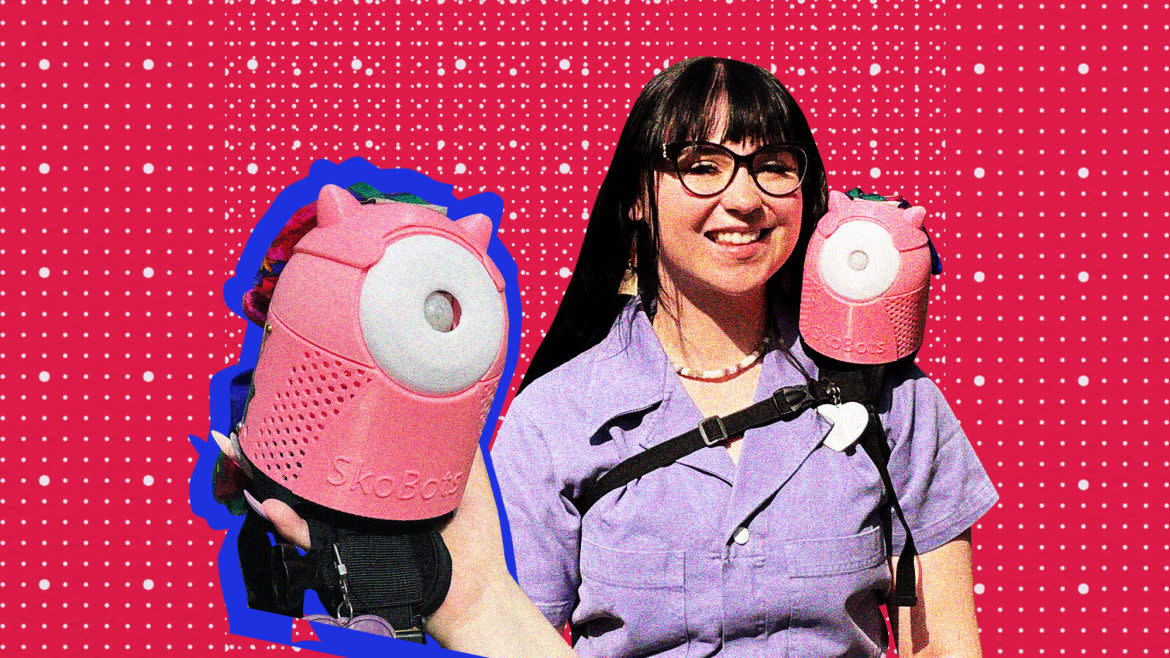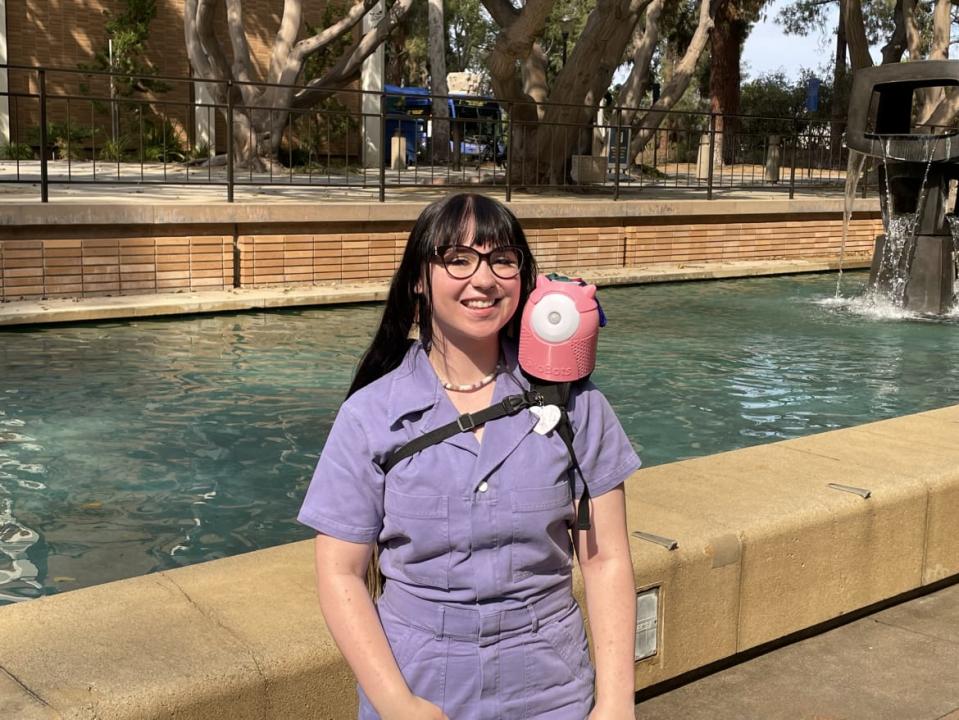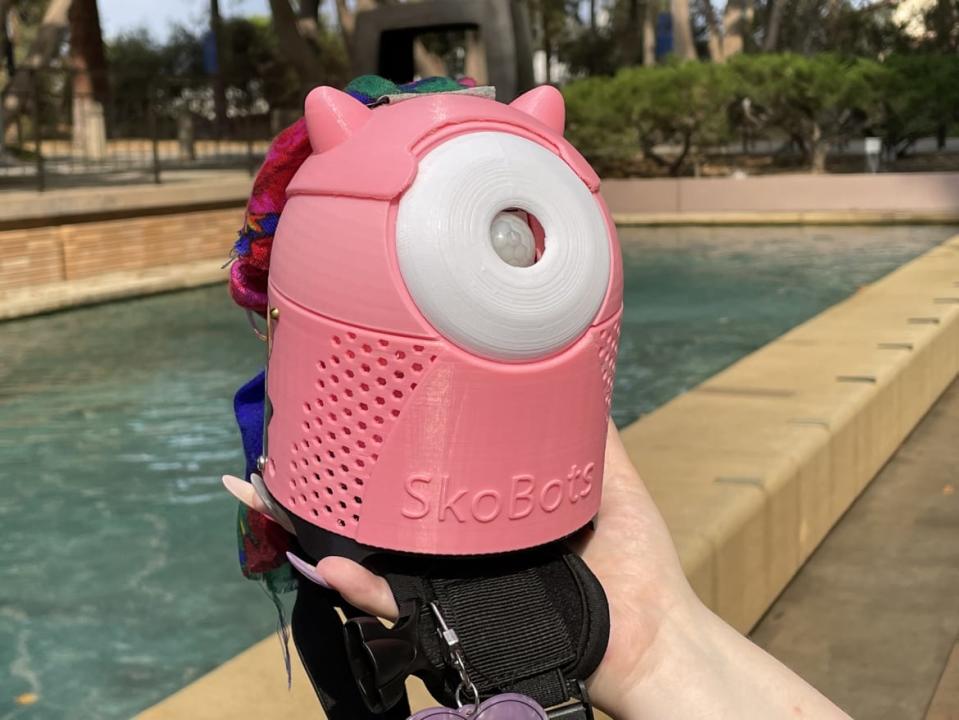These Languages Are Fading—So She Trained Robots to Help Save Them

Language revitalization is vital to preserving Indigenous cultures and identities—but resources are dwindling. Fewer than 1 in 10 Indigenous children in the United States spoke a traditional language at home in 2010, according to the U.S. Census Bureau. That’s less than half as many as among Native Americans 65 or older—an alarming figure when many of these elders can be the sole speakers of a particular language. The lack of tribal school funding and other systemic obstacles like geographic isolation only exacerbate the issue.
As this gloomy, multigenerational problem plagued her Ojibwe community, inventor and Indigenous advocate Danielle Boyer considered a modern solution: robots.
"We do not have a lot of resources for my language, Ojibwemowin," Boyer told The Daily Beast. "The goal is to revitalize our languages affordably and in a way that the kids can resonate with."
It wasn’t Boyer’s first experience with children’s learning, nor her first using robots as educational tools. When she was 10, she taught more than two dozen kindergartners animal science as part of a homeschool group. The experience opened her eyes to the importance of accessibility within school systems. After being bullied off her high school robotics team, Boyer pursued engineering elsewhere in southeastern Michigan, eventually founding The STEAM Connection to foster inclusivity in youth engineering.
Her first mass-distributed product was Every Kid Gets a Robot (EKGAR), a robotics kit that teaches STEM-related technical skills. Operating as a non-profit, The STEAM Connection sent more than 8,000 units of EKGAR to children throughout North America entirely free. But Boyer wanted to confront issues more directly affecting her own community.
That’s why Boyer created SkoBots to address the deficiency of linguistic resources in tribal schools. The name is derived from “skoden,” a Native American slang term equivalent to “let’s go then.” She teamed up with Johns Hopkins University professor Joshuaa Allison-Burbank, a Diné and Pueblo speech-language pathologist who served as a mentor for the project. Along with Taino mechanical designer Robert Maldonado, Boyer and Allison-Burbank launched SkoBots in September 2021.
"We can make learning fun. We can have students be part of developing and building the robot to personalize it," Allison-Burbank told The Daily Beast. "That's tied to and important for culturally responsive teaching practices and also reclaiming of identity. These spaces are, for the most part, colonial, and now we're starting to think more about how to Indigenize these spaces."
To have an impact in the classroom, however, SkoBots needed to be more than just effective technology. They had to appeal to both children (to interact with the bot) and elders (to be comfortable recording phrases). So, inspired by classic toys like Mr. Potato Head and Tickle Me Elmo, the trio built a colorful robot with a spoken personality. The device walks the wearer through a simple and guided lesson about their language. They also made it wearable on children’s shoulders with a GoPro strap.

SkoBot inventor Danielle Boyer wears one of her customizable language-teaching devices strapped to her shoulder.
The design allowed for personalization. Allison-Burbank owns the first SkoBot, which sports a hat and Native jewelry to represent a Navajo youth finding their way in the world. Boyer’s SkoBot is bright pink, adorned with Ojibwe flowers and a keychain reading “not ur Pocahottie.”
"We wanted the robots to be customizable so that the kids could make them their own," Boyer said. "They could reflect their communities and their cultures in the robot in a way we haven't seen before."
As it turned out, free robots were more appealing than anticipated. Boyer estimated her charity receives about 10,000 requests per week, and almost 90 percent of applications granted have to be entirely subsidized. That’s no small order when each SkoBot costs around $100 to make. Boyer is the first to admit that between its microcontroller boards, speakers, and DC adapters, electronics costs are “not optimal” when added to 3D printing and other manufacturing expenses.
She’s hoping to use in-house PCB manufacturing to bring unit costs down under $30. Currently, The STEAM Connection’s largest financial supporter is MIT, but the nonprofit also acquired funding from brands such as L'Oréal Paris and MTV.

Boyer estimated her charity receives about 10,000 requests for SkoBots per week, and almost 90 percent of applications granted have to be entirely subsidized. That’s no small order when each one costs around $100 to make.
A year after launch, SkoBots can verbally instruct in four languages including Ojibwemowin and Taino. The bots also know “bits and pieces of phrases” from a handful of others. Additionally, the robots can function with Bluetooth and an accompanying mobile app.
Allison-Burbank called the current robots successful instructional aids and interest-sparking tools, but with artificial intelligence progress, he expressed optimism that a SkoBot could be less dependent on a human operator one day.
“The hope is that, eventually, we can give it more of a brain, more of some personality, so that the robot can take charge of many of these interactions,” Allison-Burbank said. Once the robot’s voice recognition and speech-to-text software improves, he added, more reciprocal interactions could be possible.
Stephen Camarata, a hearing and speech sciences professor at Vanderbilt University, isn’t as convinced. Camarata told The Daily Beast he didn’t consider present-day artificial intelligence powerful enough to replace the coreferencing that parents, teachers, or even peers provide in children’s second-language learning, although he conceded that social robots could be useful language tutors if they were attuned to students’ levels.
"If you're trying to elicit the words from the child, and they're not really in a functional communicative context, the learning is limited," Camarata said. "If people were to design robots that actually met the child where they were developmentally, I'm optimistic that would be very effective."
Camarata cited a 2018 research article summarizing several previous language-learning studies involving social robots and children. The authors found mixed results, but noted positive associations between social behavior and engagement. According to the article, humanoid or animal-shaped robots were also “generally perceived as more helpful, credible, informative, and enjoyable to interact with than animated characters.” SkoBots occupy a strange middle ground—they exist in physical form, but still resemble a Minion more than any human or animal. This could potentially limit its ability to effectively teach children.
As useful as social robots may be, the best revitalization methods still involve federally supported school systems, according to the director of the Communication Science and Disorders PhD program at the University of Pittsburgh, Leah Fabiano-Smith.
"What I’ve seen in terms of initiatives like SkoBots is that, in the absence of institutional or infrastructural support, we see innovation in a lot of communities," she told The Daily Beast. "I'd love to see the budget of the United States of America invest in education, and then we may see language revitalization programs, but that seems to be somewhat of a pipe dream in our current political climate."
Blockchain May End the Pillaging of Indigenous Genetic Data
Fabiano-Smith also pointed to capitalism’s deprioritization of Native American linguistic education, which has been particularly devastating for groups who have already had "their culture, their language, their traditions gutted from them due to settler colonialism.”
"The value in it doesn't have anything to do with our financial system," Fabiano-Smith said. "It's almost something you can't really put a price tag on."
While traveling around the country to introduce SkoBots in schools and build linguistic resources, Boyer is simultaneously embarking on a different mission—learning Ojibwemowin herself. With just one year of formal university education, she had already done much of her learning outside of a classroom setting anyway.
It’s an excuse to work with her own elders, sure, but Boyer said the educational tool has significantly helped her progress.
"The reason why I created the robot was also to aid in my own learning journey," Boyer said. “When you’re learning something and teaching it as well, it really solidifies it.”
Get the Daily Beast's biggest scoops and scandals delivered right to your inbox. Sign up now.
Stay informed and gain unlimited access to the Daily Beast's unmatched reporting. Subscribe now.

